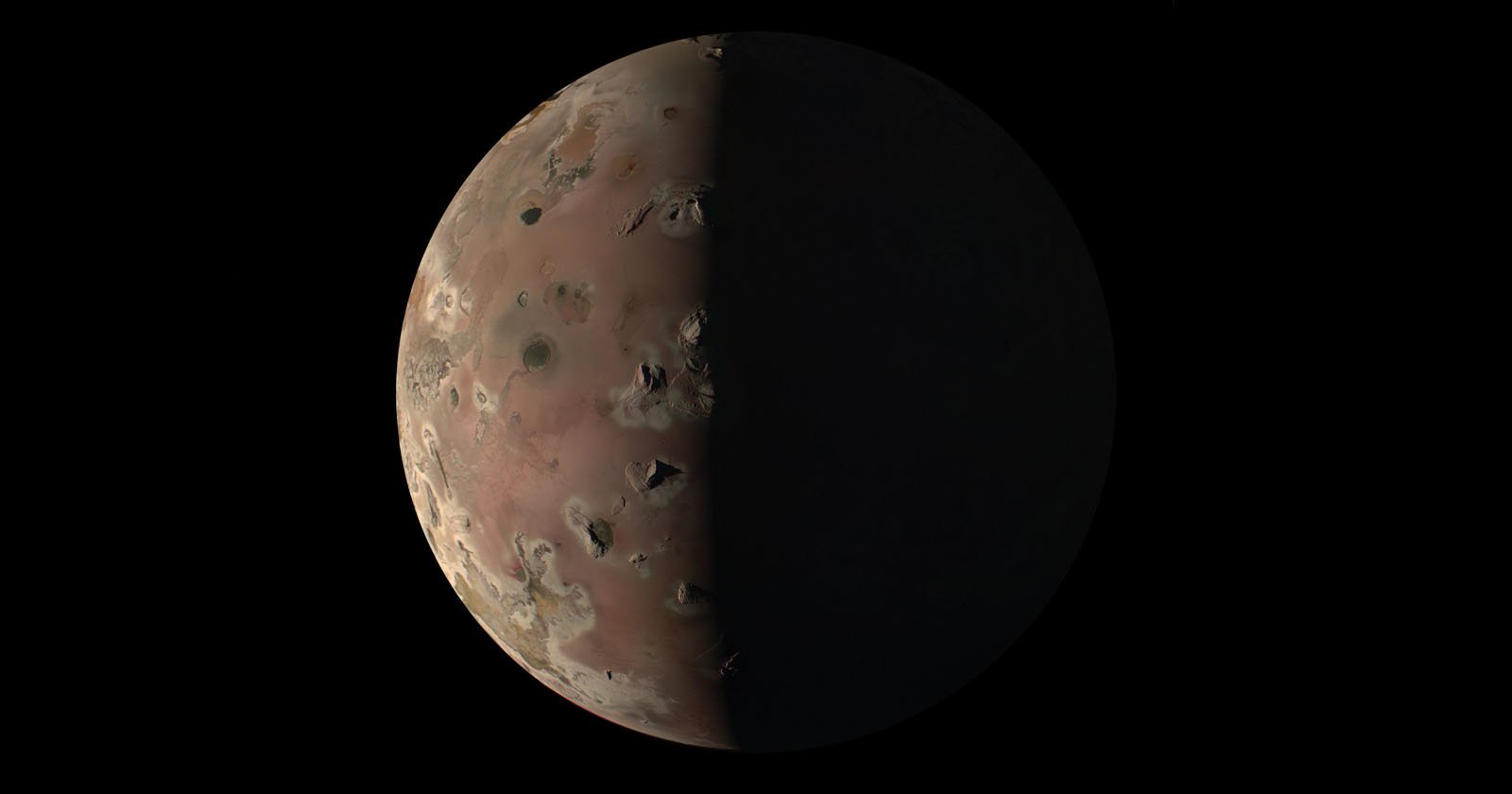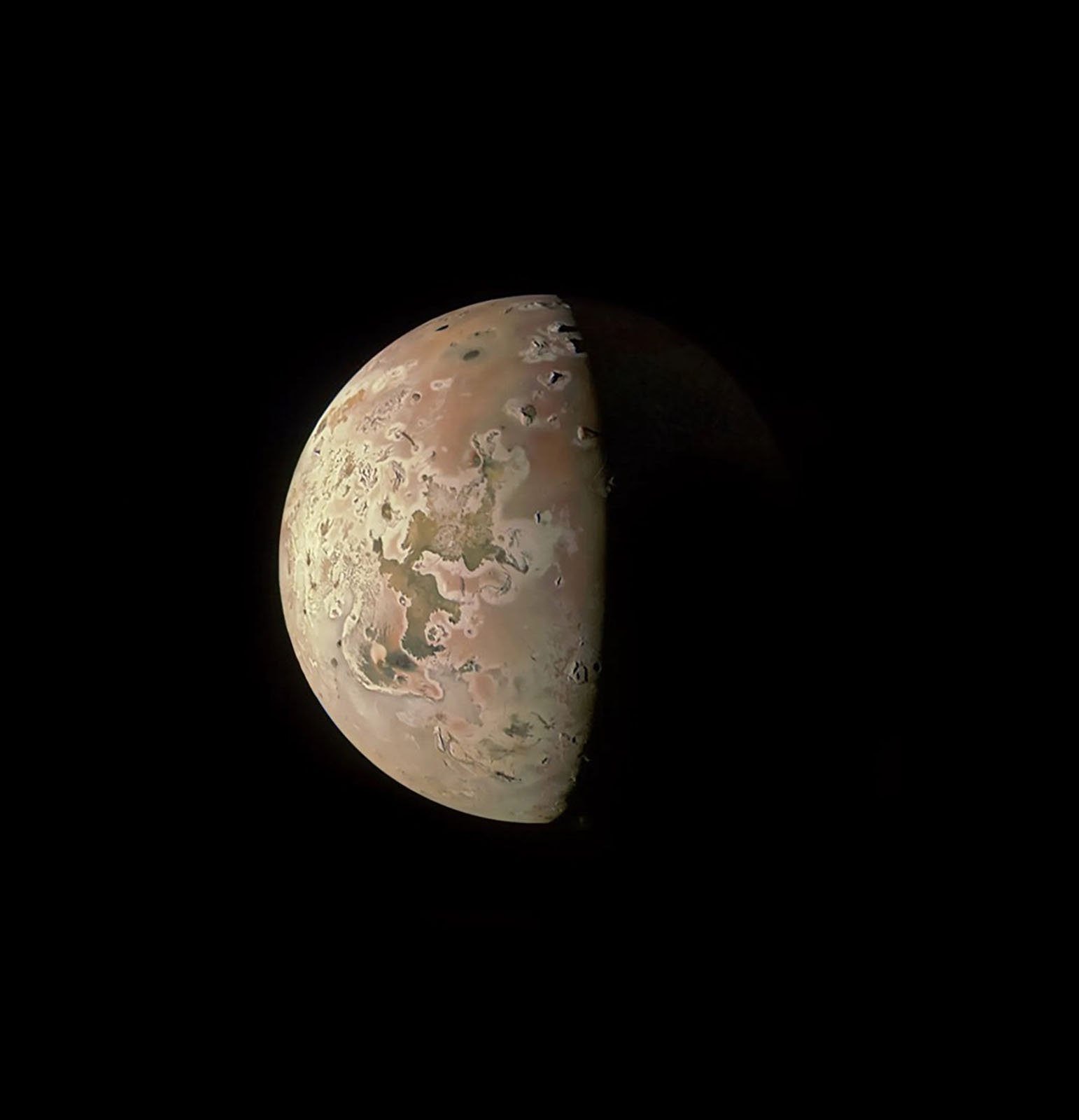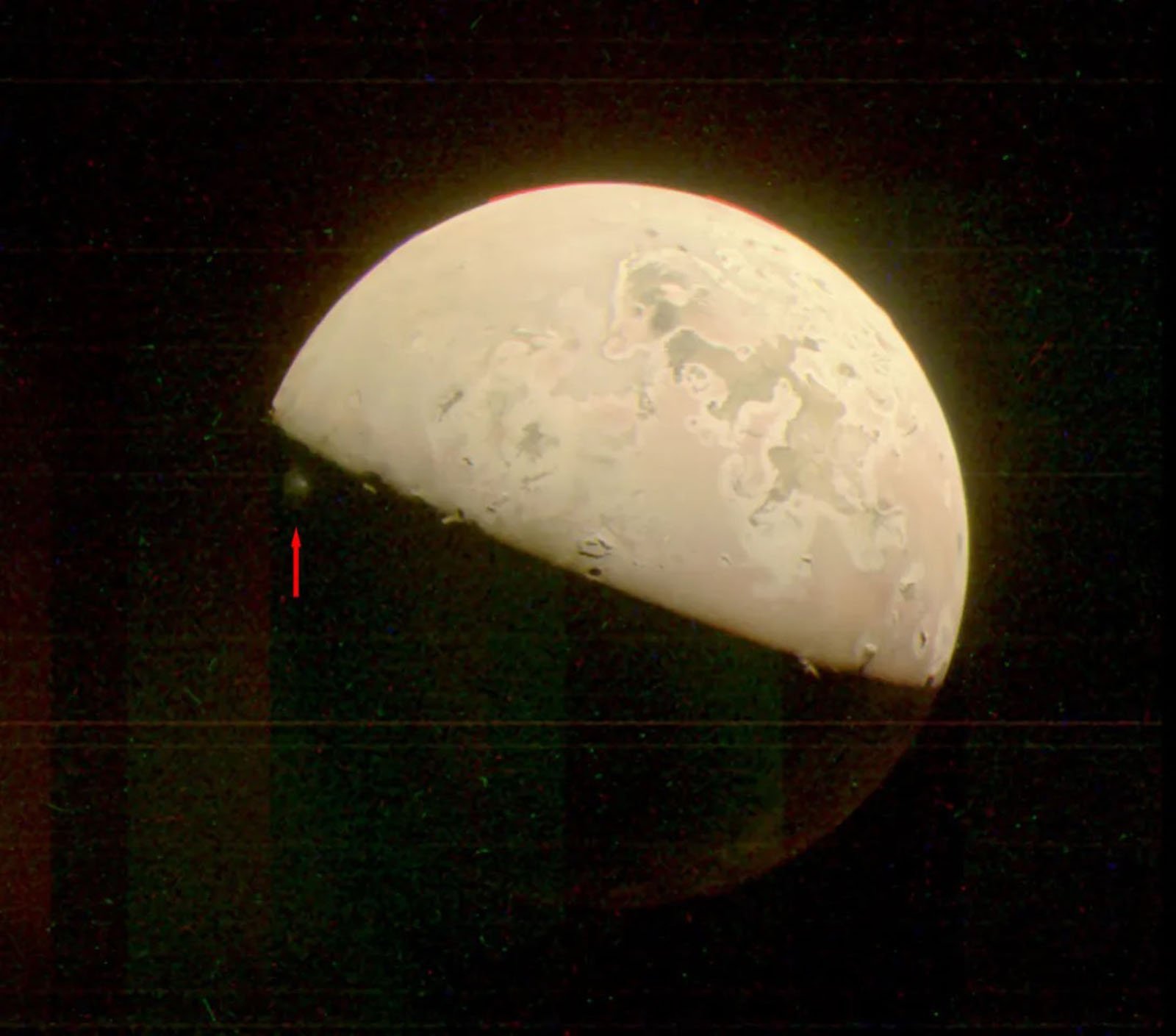Juno Captures Incredible Image of Jupiter’s Moon Io During Closest Flyby

NASA’s Juno spacecraft has performed nearly 60 flybys of Jupiter and documented close encounters with three of the planet’s four largest moons. Over the weekend, Juno made its closest flyby to the Jovian moon, Io, and it was the closest any spacecraft has come to the Jovian satellite in more than two decades.
Coming within about 930 miles (1,500 kilometers) of Io, Juno captured an incredible new photo of the moon, which is the most volcanic world in the entire solar system. Alongside Juno’s breathtaking portrait of Io, the spacecraft also collected a litany of data that will surely be a treasure trove for scientists, Space explains.
“By combining data from this flyby with our previous observations, the Juno science team is studying how Io’s volcanoes vary,” says Juno’s principal investigator, Scott Bolton of the Southwest Research Institute in San Antonio, Texas.
“We are looking for how often they erupt, how bright and hot they are, how the shape of the lava flow changes, and how Io’s activity is connected to the flow of charged particles in Jupiter’s magnetosphere.”
Juno is scheduled to make another pass of Io soon: on February 3, the craft will come within about 930 miles yet again.
The spacecraft has been actively monitoring volcanic activity on Io throughout the Juno mission, which began in earnest in July 2016, when the craft entered Jupiter’s orbit. Until the recent flyby, Juno had been monitoring Io’s volcanoes from about 6,830 miles (11,000 km) to over 62,100 miles (100,000 km).

Thanks to prior flybys, Juno has also photographed the moon’s north and south poles. An image from October shows an eruption from the Prometheus volcano.

“With our pair of close flybys in December and February, Juno will investigate the source of Io’s massive volcanic activity, whether a magma ocean exists underneath its crust, and the importance of tidal forces from Jupiter, which are relentlessly squeezing this tortured moon,” says Bolton.
Juno’s three onboard cameras will all be active during the upcoming Io flyby. The Jovian Infrared Auroral Mapper (JIRAM) captures images in infrared and will collect the heat signatures of the volcanoes on Io’s surface. The Stellar Reference Unit, used as a navigational star camera, will obtain the highest-resolution image of the moon’s surface ever. The third camera, JunoCam, will take visible-light color photos of Io.
JunoCam was designed to operate for only eight flybys of Jupiter, and is primarily onboard for public engagement work. February’s Io flyby will be Juno’s 57th orbit around Jupiter, and JunoCam is still kicking.
However, according to Ed Hirst, project manager at NASA’s Jet Propulsion Laboratory, JunoCam is feeling the effects of the remarkably harsh environment. “The cumulative effects of all that radiation has begun to show on JunoCam over the last few orbits. Pictures from the last flyby show a reduction in the imager’s dynamic range and the appearance of ‘striping’ noise. Our engineering team has been working on solutions to alleviate the radiation damage and to keep the imager going.”